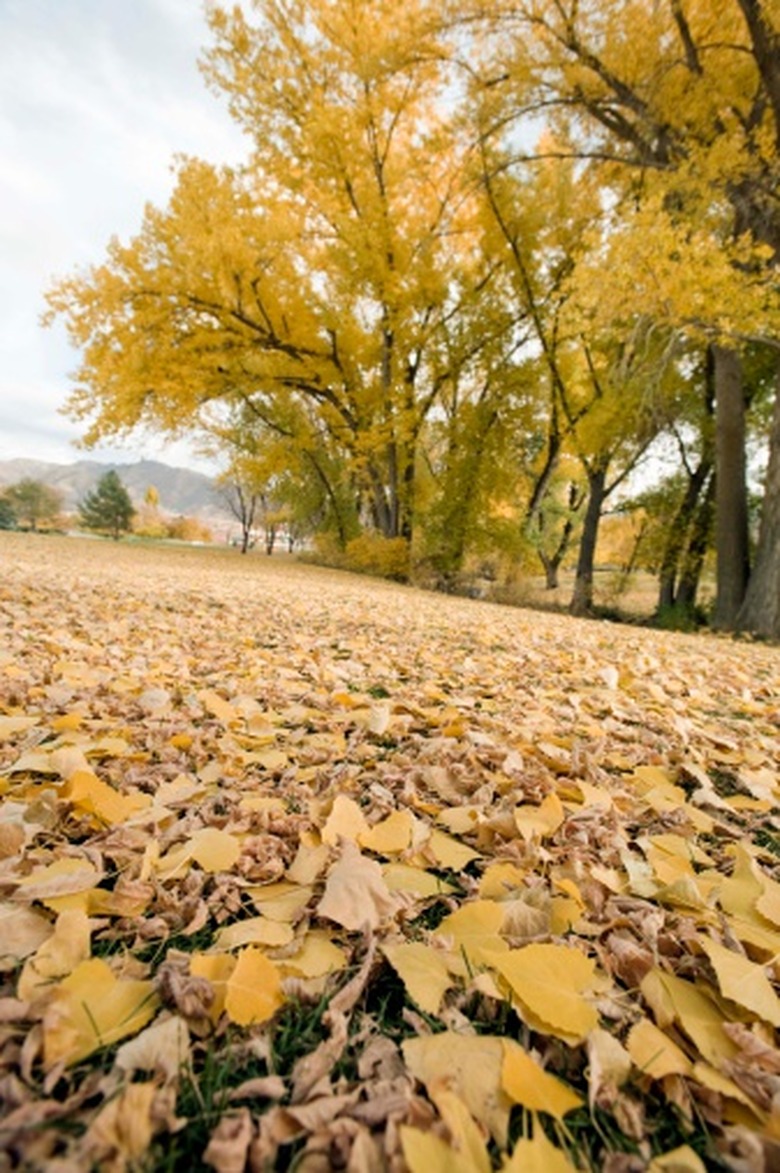The Best Way To Burn Pine Needles And Leaves
Things Needed
- Permit
- Rake
- Hoe
- Shovel
- Water source
- Newspaper
- Matches or lighter
Tip
As an extra precaution, call the local fire department to notify them of your burn plans.
Health hazards and pollution concerns make leaf and needle burning a controversial issue. However, in certain areas small burn piles are permitted and in some areas burning pine needles and leaves is a necessary precaution for avoiding dangerous wildfires. Burning pine needles and leaves should be done safely and with proper planning.
Plan Ahead
Step 1
Call the local authorities in advance to seek approval and gain permits to avoid fines. Ask for the pre-approved burn list to avoid burning prohibited debris. Determine adequate dryness of the pine needles and leaves to avoid creating excessive amounts of smoke.
Step 2
Check the weather forecast for humidity, wind speeds and precipitation for the day of the burn. The South Carolina Forestry Commission states it is safer to burn a few days after precipitation or when humidity is 30 percent or higher.
Step 3
Determine location of burn pile based on safety and city regulations. Plan to place piles in open areas, away from structures and other flammable substances. Check for overhead obstructions and avoid burning near roadways.
Step 4
Collect the necessary tools for the job: rake, shovel, hoe, nearby water source and igniting materials such as newspaper and matches.
Build and Burn
Step 1
Using shovels and rakes, clear the ground down to mineral soil prior to creating the pile. Loosely stack dry debris not larger than 4 feet in diameter on top of the cleared area. Buffer the pile with a 10-foot firebreak that is free from flammable materials.
Step 2
Ignite the pile of leaves and pine needles with balls of newspaper and a match or lighter. Do not use gasoline or accelerants. Gradually add more pine needles, leaves and twigs to avoid intense heat and to prevent burning debris from floating overhead.
Step 3
Tend the fire for the duration of the burn. Monitor throughout the day and do not start new fires that will burn into the evening. The International Association of Certified Home Inspectors, Inc., suggests avoiding creation of new burning piles after 2 p.m. Do not allow burn piles to smolder; smoldering creates excessive smoke and pollution.
Step 4
Extinguish the fire before nightfall using a rake, shovel or hoe to move the unburned fuel and debris to the center of the pile. Douse it with water or soil to put out the fire. Check the area after dousing for coldness to determine whether the fire is fully extinguished and again in 24 hours for possible re-igniting.
